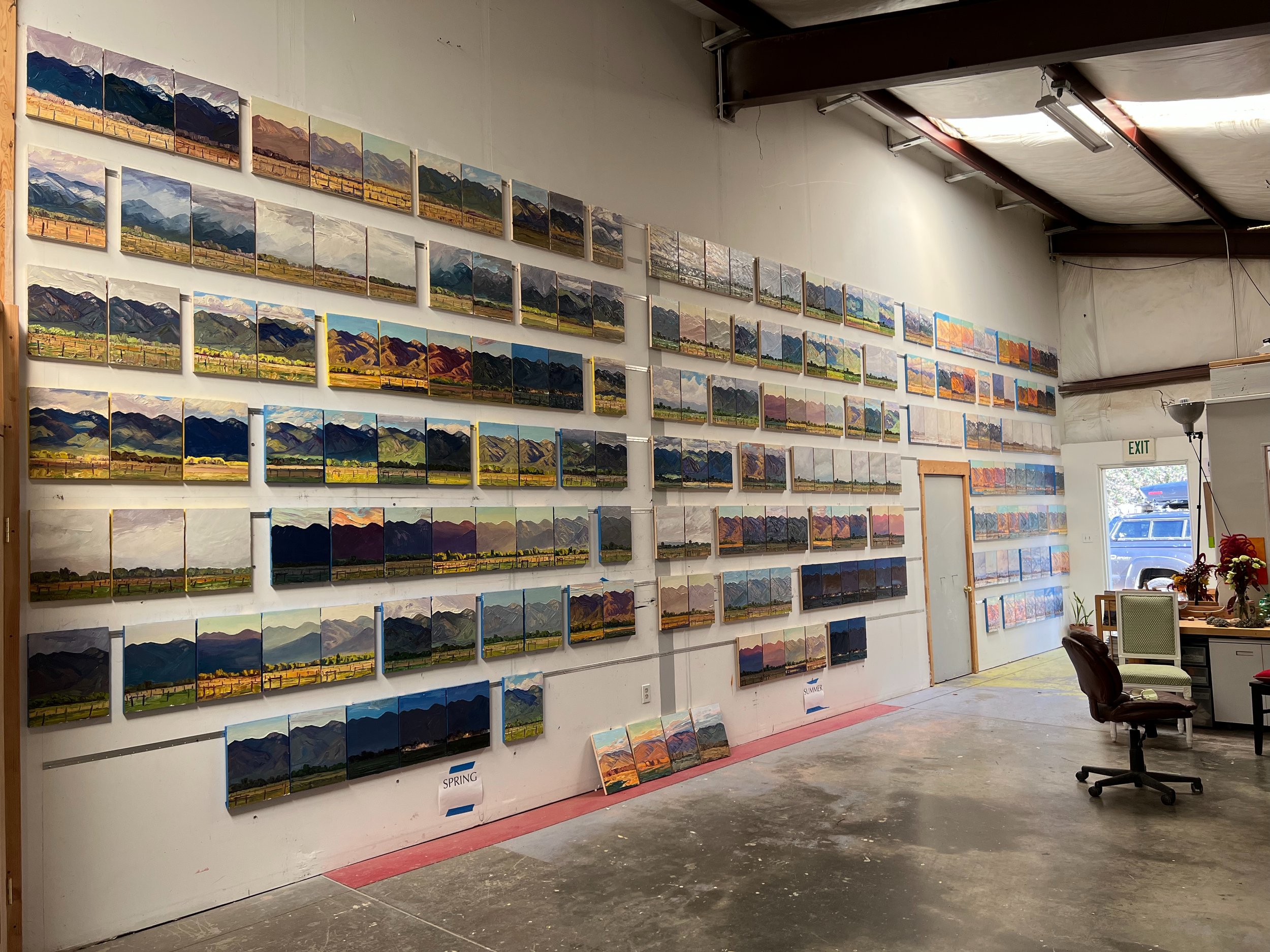
statement / May 2023
Much of my work – and especially long-form works such as 10,000 Mountains or Monument – arises out of an intensive process in which I repeatedly paint at the same locations over months, seasons, and years. I immerse myself in the landscape in pursuit of artwork animated by forces beyond my control. My all-season outdoor studio unrolls out of the back of my 4x4 pickup truck’s bed and shelters me just enough to paint in extremes of weather and season, but by design leaves me uncomfortably subject to their whims. I sweat in the hot sun, fumble around with frozen fingers in winter, and tie easels down and don rain gear to paint through wind and rain in the summer monsoon. In this way, the act of painting is centered in a bodily felt experience of each place and Nature’s happenstance can shape each painting’s development as well as the larger narrative arcs that unfold throughout each series as it grows.
I use big brushes and silicone spatulas to add and subtract thick layers of impasto, recording the story of decisions made and remade in response to each evolving day. Paintings frequently grow as large as 6 or 12 feet on a side and extend across multiple panels, building with flows of attention and the dynamics of weather. Each day on location contributes to larger arcs of work that borrow from my previous career in science and almost empirically investigate time, change, and human perception. Across groups of related paintings, I hold some things constant – such as season, time of day, motif, composition, format, or location – while varying others. This helps focus attention beyond a singularly remarkable subject such as, for example, the Taos Gorge, and present such subjects as they evolve through time. Doing so hopefully opens a bigger view of the places that inspire the work and perhaps speaks to the complexity of the natural world and our relationship to it.